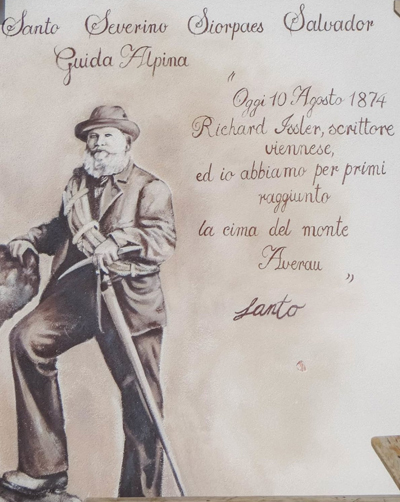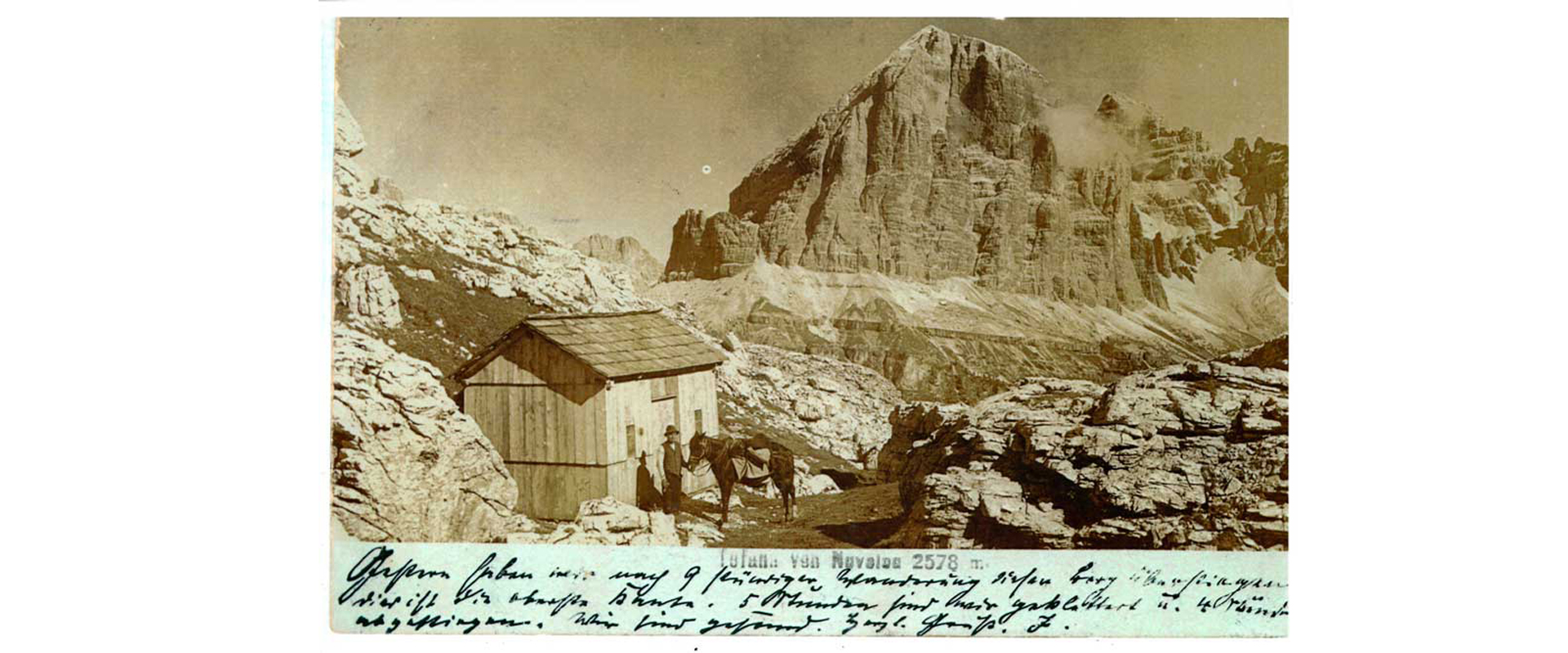
Nuvolaupaßhütte fine '800 © archivio Prof. Giacomel

Nuvolaupaßhütte fine '800 © archivio Prof. Giacomel
In 1903 the Finazzer family erected a two-storey brick building with four 8-bed dormitories and inaugurated the refuge with the name Nuvolaupaβhütte (Nuvolau pass refuge).
This refuge was also a base for some of the mountaineers who played an important and ground-breaking role in the evolution of Dolomite climbing.
One of the first of the routes on Mt. Averau, the Camino Est, was put up in 1910 by Stanley Greenough and G.B. Barbaria; in 1925 Federico Terschak and Giuseppe Degregorio climbed the west chimney of Mt. Averau.
The Via Astaldi, the first route which reached the 6th degree of difficulty, was put up in 1942 by Enrico Lacedelli and Angelo Verzi with Mario Astaldi.

During the First World War, in 1916, the Italian army occupied the refuge - strategically located, sheltered from the Lagazuoi artillery but very close to the Cinque Torri front - and turned it into its headquarters.
Small wooden barracks for military logistics were set up around the hut.
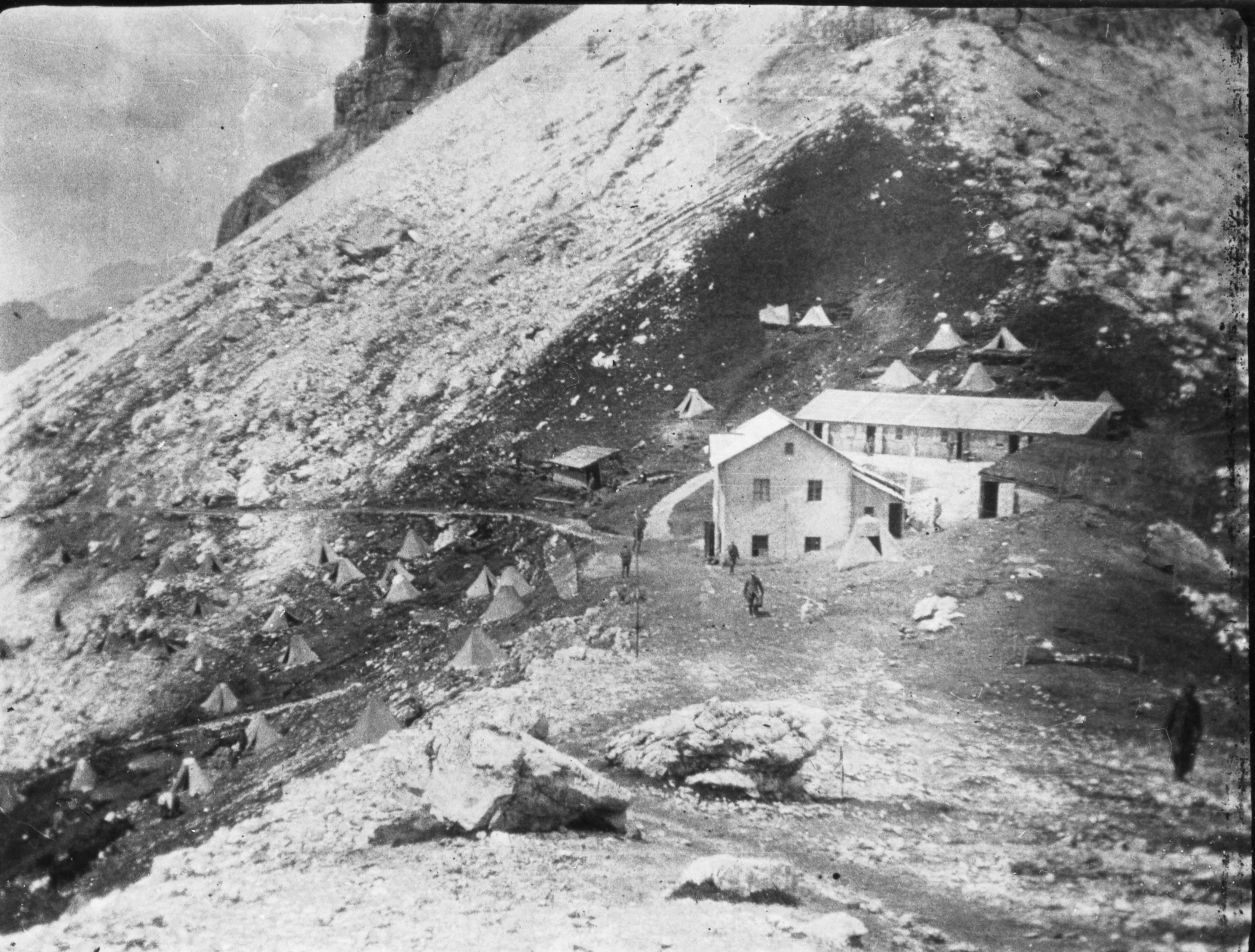
At the end of the war the building - with its exposed rock walls, as was customary at the time - was still standing, but the roof, the windows, doors and wooden ceilings were missing, taken away after the defeat of Caporetto and the retreat to the Piave river.
At the outbreak of the war, Rodolfo Finazzer had been called up for duty and taken prisoner in Galicia, on the Russian front. After the conflict, he returned home on foot and by makeshift means, recovered possession of the building and opened it as a summer refuge.
In the following years, however, he gave up business.
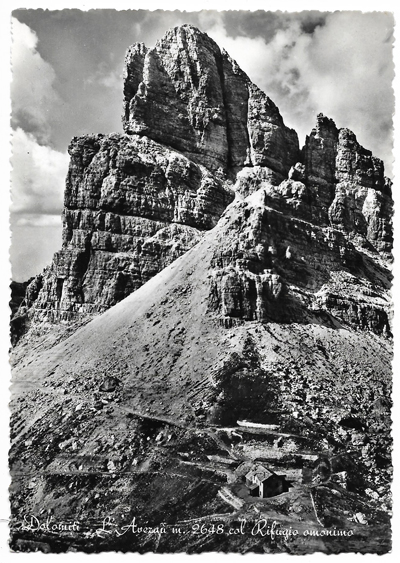
In 1974, in the course of the development of tourism in the Giau area with the construction of three lifts by the ski lift company Colle Santa Lucia, the refuge was rebuilt in a manner suitable for winter operations between 1970-1976 by the Finazzer family, father Oreste and his sons Walter and Osvaldo.
Due to the lack of access roads from Colle and Cortina, however, the business wasn’t profitable, thus they had to give up this job.
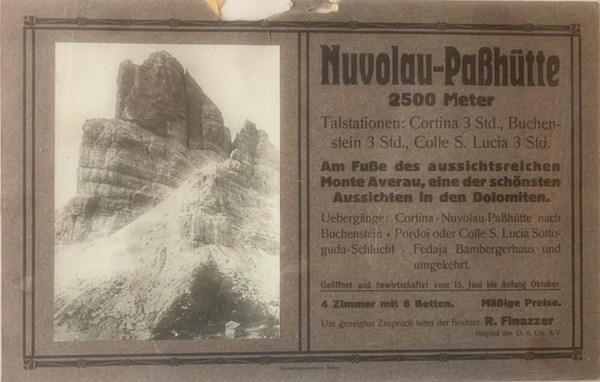
In 1980, Sandro Siorpaes and his wife Paola De Lorenzi bought the building from the Finazzer brothers.
The construction works ended in 1982 and the mountain hut was inaugurated with the name Rifugio Averau.
The Siorpaes family carried out further construction works in 1985 and 1988.
The current building is the result of a major renovation and expansion project completed in 2010.

Since 1982 this renowned refuge has been managed by the same family, who in the meantime can also rely on the active collaboration of their two children, Margot and Matteo Siorpaes, devoted to this job.
Apart from the beauty of the location and the hut itself, the refined furnishings and the excellent service, the mountain hut Rifugio Averau is mainly known and loved for its first-class cuisine.
Sandro, the owner and manager of the refuge, is a direct descendant of the mountaineer Santo Siorpaes, one of the greatest mountain guides of the second half of the 19th century and author of many first ascents.
On one of the walls of the Averau refuge, there is a large fresco that depicts him and commemorates his first ascent of Mount Averau together with the Austrian writer and mountaineer Richard Issler on 10th August 1874.
